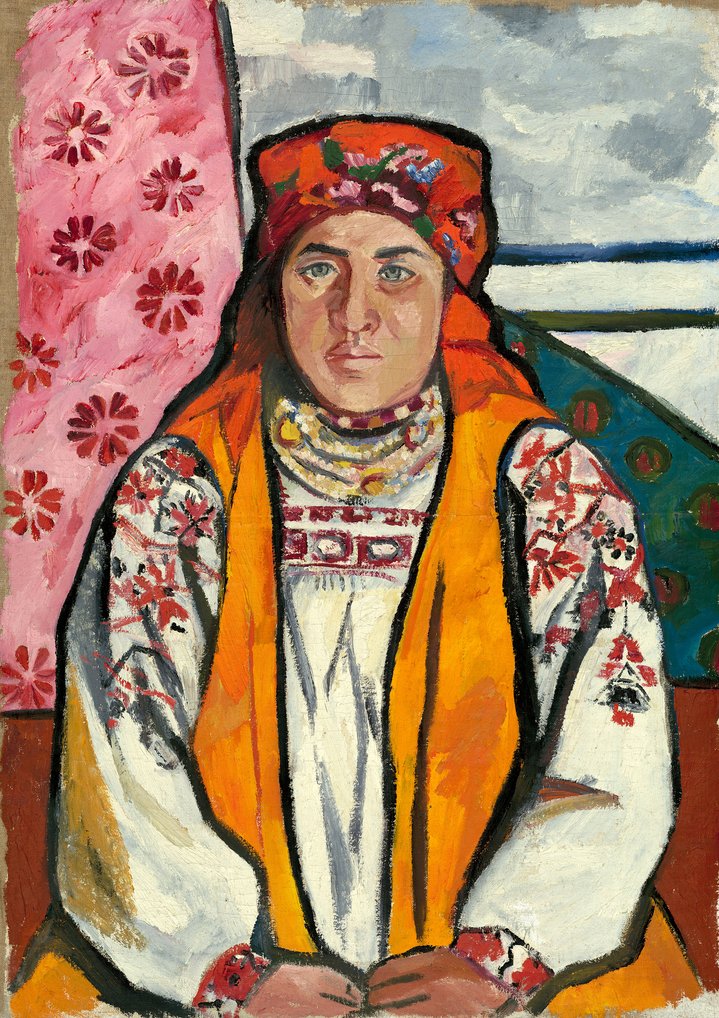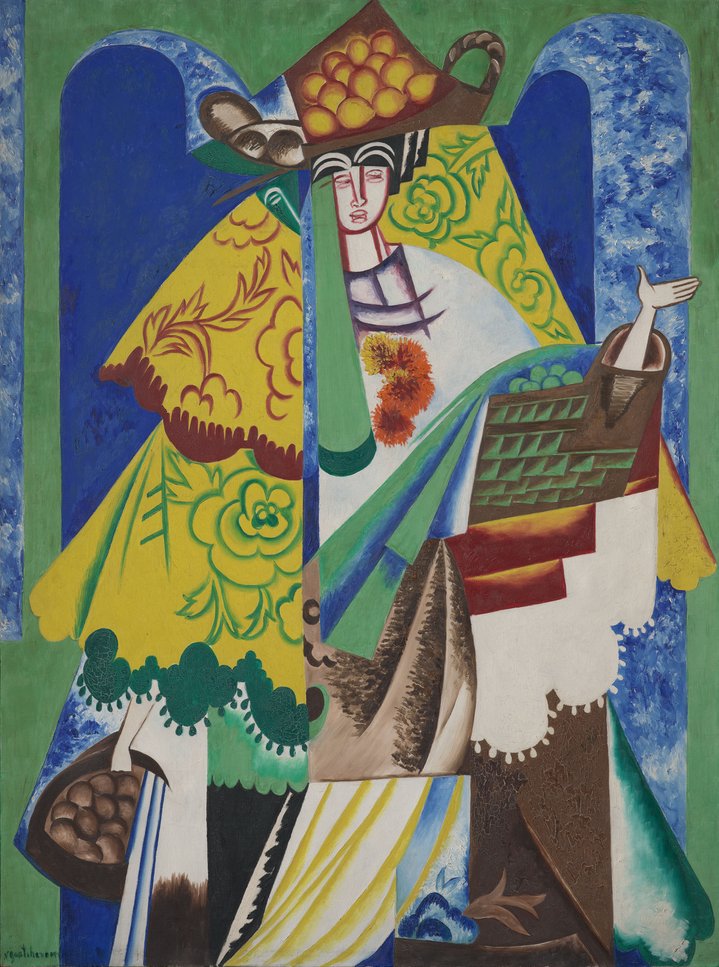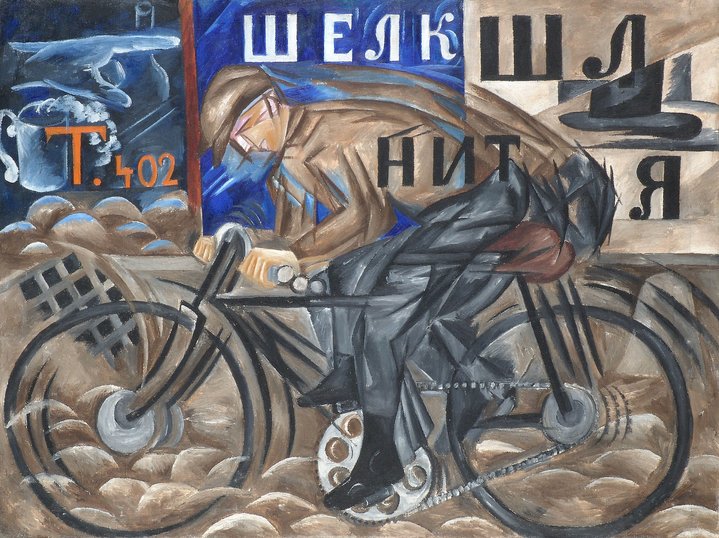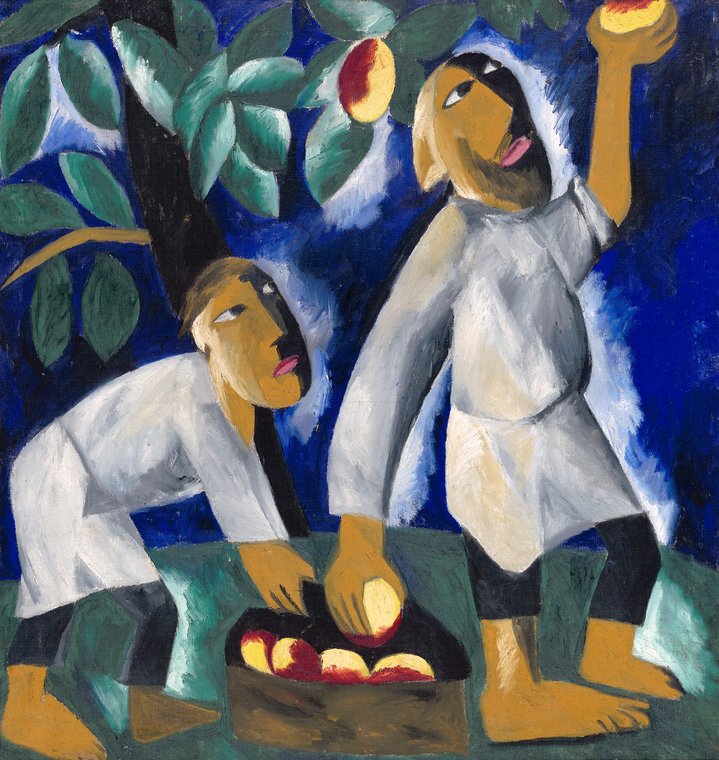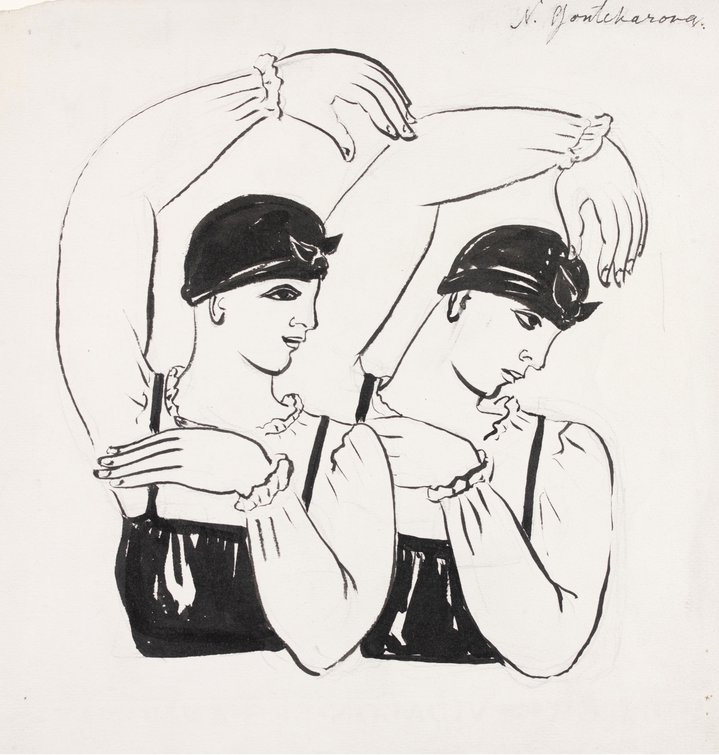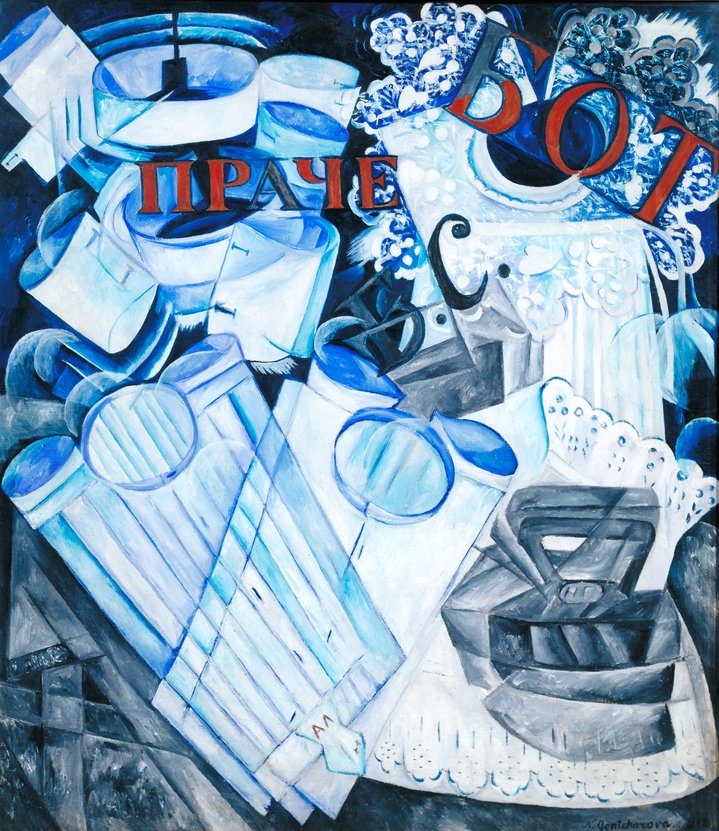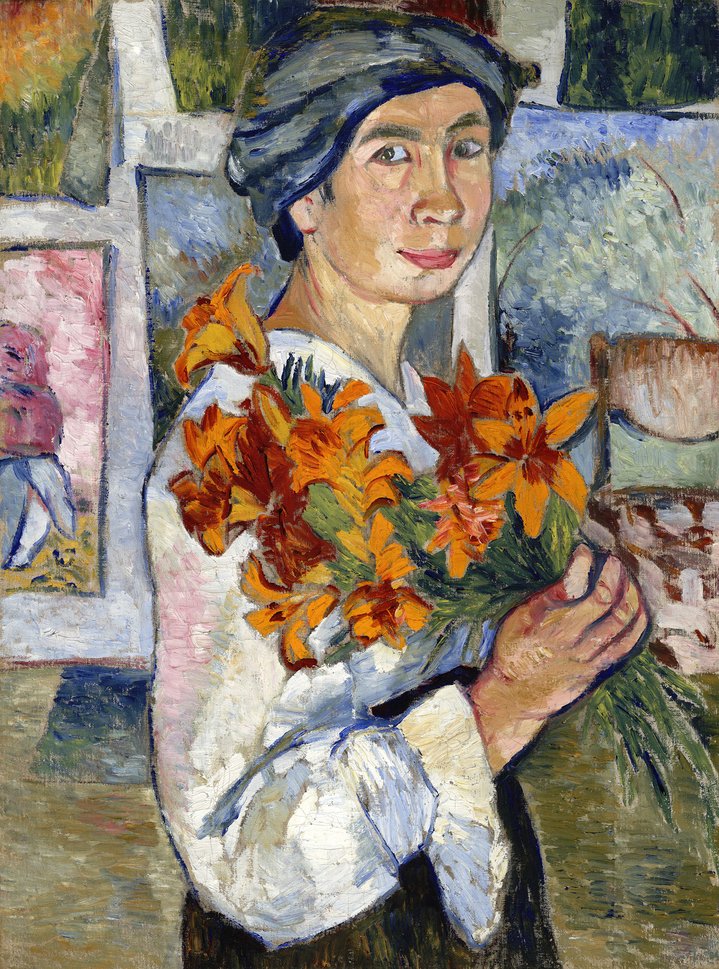Natalia Goncharova on show on the banks of the Thames

Natalia Goncharova. Harvest: Angels Throwing Stones on the City, 1911. Oil on canvas. 100x129 cm. State Tretyakov Gallery, Moscow. Bequeathed by A.K. Larionova-Tomilina 1989© ADAGP, Paris and DACS, London 2019
Tate Modern’s solo exhibition of the prominent Russian Avant-Garde artist joins folk art with European modernism on a journey from Russia to Paris
A scene from the childhood of Natalia Goncharova (1881–1962) in what was then the Russian Empire’s Tula province opens Tate Modern’s show of this path-breaking 20th century artist.
“Washing the Canvases” (1910) shows peasant women in the process of making canvas on her family’s estate. It was the fabric which would envelop her life, although not through in textile manufacturing, which had become her family’s line of business, and not from the outset. Having moved to Moscow at the age of 11, Goncharova eventually tried applying herself to diverse fields, such as zoology, history, botany, and medicine before settling on an art education.
Her artistic journey is similarly manifold and experimental. She travelled between countryside and city and between Paris and Moscow, both physically and imaginatively. Flinging herself with gusto into different genres, styles and media, Goncharova is difficult to pin down.
Hypothetically, one could probably create a dozen such shows, each of which showing a different and irrecognizable Goncharova. One show might present her as Goncharova the Cubist, another as a Fauvist, and yet another as an Impressionist or Primitivist, to say nothing of the costume designer, set decorator, religious painter, book artist, and so forth. She left nothing untried. It was this passion for experiments that was her rallying cry, as defined in the manifesto written by her long-time partner and eventual husband, painter Mikhail Larionov (1881–1964). “We recognize all styles existing in the past and now, as suitable for expressing our art,” he wrote. Some paintings seem very reminiscent of Picasso’s or Braque's Cubist period. Others could easily pass for a Matisse or a Derain. The Tate show illustrates some of these influences with original artworks from the great Shchukin and Morozov collections which were then open for viewing in Moscow. Although equally enthralled by anonymous Russian folk-art traditions and the new western art giants, she later rejected the “West” in favour of the “East.”
It is because of the role she played in imitating, translating and transplanting European modern art movements into the Russian context that Goncharova is often hailed as the stepping stone that subsequent Avant-Gardists used to find their paths to radical abstraction.
Her work was groundbreaking, even scandalous at the time. She was the cause of outrage and suffererd censorship for her irreverent religious works and for daring to depict nudes as a woman. Four such nudes, contorted and dynamic, hang together at the Tate like a dissected and re-filtered version of Matisse’s “Dance.” But this is lost on today’s audience. Over a century of boundary-smashing art later, a return to a long-lost world is needed to conceive how offensive a painted nude could be.
Even though she was a radical innovator, it’s not that which makes her show relevant today. She is captivating now because of her multifaceted, omnivorous vision. Goncharova is open-hearted and palpably curious, as her self-portrait with piercing inquisitive eyes demonstrates.
She is a lover of colour and form, let loose on the crest of a tremendous wave of artistic freedom. Like a child in a toyshop, she wants to grab it all. One can imagine her in her studio dashing from one painting to another, from Cubist to Fauvist and onwards to engravings as her mind overflowed with images and possibilities — all while her paintings were being whisked off to her explosive 1913 show, a whopping 800 of them, some still wet with fresh paint.
The paintings on show at the Tate represent an explosive moment in her career, magically preserved by oil paint that transports the viewer into the artist’s overflowing studio that bursts with excitement while a cat quietly nurses her newborn litter lying in the corner next to a painted tray, quickly becoming the model for a primitivist canvas.
When even first-year art students are expected to blindly grasp a signature touch and hang onto it for dear life, Goncharova demonstrates that you can spend a lifetime learning, exploring, and experimenting. Her sensitivity is manifest in her neo-primitivist work, distinct from the haughty appropriation of “primitive” imagery sourced in faraway colonies by her European counterparts. She found inspiration in her homeland, sometimes twisting “lubok” folk prints beyond recognition. This approach today seems more reverent than the formal skimming of African mask imagery that was popular with modernist artists in 20th-century Europe.






